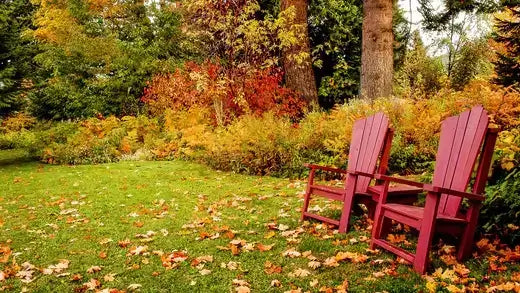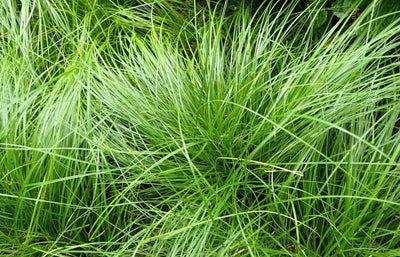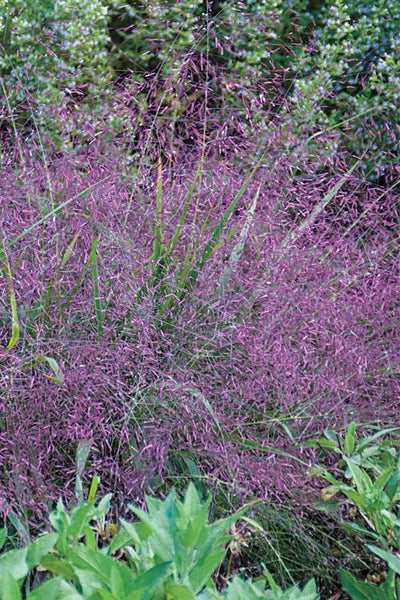Preparing your lawn for winter is essential to maintaining a healthy and vibrant property throughout the year.
Winter could be harsh on your grass, and taking the proper steps to protect it before the cold weather sets in can significantly affect how well it recovers in the spring.
In this comprehensive guide, they will walk you through the process of preparing your lawn for winter step by step.
1. Raking and Removing Debris (Fall Cleanup): Before winter arrives, it's crucial to give your lawn a thorough cleanup. Begin by raking leaves, sticks, and other debris that may have accumulated on your property during the fall. Piles of leaves are left on the grass. Remove all trash to ensure your lawn can breathe and stay healthy throughout the winter.
2. Mowing and Trimming: As winter approaches, gradually lower the cutting height of your lawn mower. This helps prevent the grass from becoming too long, leading to snow mold and matting. However, avoid cutting it too short, which can stress the grass. A general rule is maintaining a height of around 2 to 2.5 inches before the first frost. Additionally, trim any overhanging branches or vegetation that may shade your lawn during winter. This will allow more sunlight to reach your grass and improve its health.
3. Aeration: Aeration is the process of perforating the soil with small holes to allow air, water, and nutrients to penetrate deep into the root zone. You can use a core aerator to create holes in the soil regularly. Aeration helps relieve compaction, improve root growth, and enhance lawn health.
4. Fertilization: Applying a fall fertilizer is crucial in preparing your lawn for winter. Look for a high potassium (K) fertilizer, as potassium promotes root development and winter hardiness. Applying a balanced, slow-release fertilizer in late fall will ensure your grass has the nutrients it needs to survive the winter and emerge vigorously in the spring.
5. Overseeding: Overseeding is the process of spreading grass seed over your existing lawn. It helps fill in bare spots, improve the density of your grass, and enhance its overall resilience. Choose a cool-season grass seed blend suitable for your region and lawn type. After overseeding, lightly rake the area to thoroughly ensure good seed-to-soil contact and water.
6. Pest and Weed Control: Before winter sets in, address any pest or weed issues in your lawn. Pests like grubs can wreak havoc on grassroots during the winter months. Consider applying appropriate treatments or insecticides as needed. Remove any persistent weeds, as they can compete with your grass for nutrients and water.
7. Irrigation and Hydration: Proper hydration is crucial for your lawn's winter survival. Ensure that your property receives adequate moisture before the ground freezes. Depending on your location, you may need to water less frequently, but be sure to give your lawn a deep watering when required. Aim for about 1 inch of water per week from rainfall or irrigation.
8. Winterize Your Lawn Equipment: Remember to prepare your lawn equipment for winter as well. Drain fuel from your lawnmower, trimmer, and other gas-powered tools, or use a fuel stabilizer. Clean and store your gear in a dry, sheltered area to prevent damage from freezing temperatures. This maintenance will ensure your tools are in good working condition when spring arrives.
9. Snow Removal Practices: When winter arrives and snow accumulates, be mindful of how you remove snow from your lawn. Avoid piling snow too high or leaving it on the grass for extended periods, which can smother and damage the grass. Use a snow blower or a shovel to gently remove snow from your lawn and distribute it evenly to prevent the formation of snow mounds.
10. Lawn Protection: If your area experiences particularly harsh winter conditions, consider using burlap or a winter lawn cover to protect your grass from excessive snow, ice, and wind. These covers help reduce the risk of snow mold and other winter lawn diseases.
11. Avoid Heavy Foot Traffic: During winter, try to minimize foot traffic on your lawn, especially when the ground is frozen or covered in snow. Foot traffic can cause compaction and damage to the grass blades.
12. Monitor Lawn Conditions: Throughout the winter, periodically check the condition of your lawn. Take appropriate action if you notice any issues like snow mold or excessive thatch buildup. You can gently rake the affected areas to allow for better air circulation and recovery in the spring.
13. Spring Transition: As winter ends and temperatures begin to rise, it's time to transition your lawn from its winter state to spring. Remove any remaining debris, gently rake the grass to encourage new growth, and apply a spring fertilizer to kickstart the growing season. In conclusion, preparing your lawn for winter is a comprehensive process that involves several key steps, from fall cleanup to ongoing winter maintenance.
Following these guidelines ensures your property remains healthy, vibrant, and ready to thrive when spring arrives.
Proper winter lawn care not only preserves the beauty of your outdoor space but also sets the foundation for a lush and green lawn in the coming year.
So, invest the time and effort now to enjoy the benefits of a resilient and attractive property throughout the seasons. The winter ends, and temperatures rise; it's time to transition your lawn from its winter state to spring. Remove any remaining debris, gently rake the grass to encourage new growth, and apply a spring fertilizer to kickstart the growing season.
Conclusion
Preparing and caring for your lawn during the winter months is a comprehensive process that involves several key steps, from fall cleanup to ongoing winter maintenance. Following these guidelines ensures your property remains healthy, vibrant, and ready to thrive when spring arrives. Proper winter lawn care not only preserves the beauty of your outdoor space but also sets the foundation for a lush and green lawn in the coming year. So, invest the time and effort now to enjoy the benefits of a resilient and attractive property throughout the seasons.


